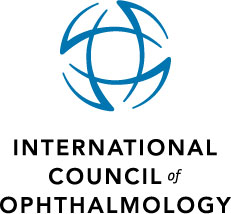Patient: 52 years of age, female, BCVA 0.1 at OD, 1.0 at OS, IOP 11mmHg/14 mmHg.
Ocular Medical History: no trauma, infection, or inflammation.
General Medical History: empty, no history of cancer.
Main Complaint: decreased vision and concentric reduced visual field at OD.
Methods: Colour Image, ERG, OCT.
Findings:
Colour Image: at OD atrophy of optic nerve head, strong pigment proliferation in retinal periphery; at OS regular optic nerve head, and regular retinal appearance.
ERG: at OD reduced scotopic and photopic ERG; at OS regular ERG.
OCT: at OD cystoid macular edema, and thinning of photoreceptor layer; at OS regular findings.
Discussion:
Before establishing the RP diagnosis, it was essential to rule out other possible etiologies such as trauma, infection, inflammation, and cancer. Our case did not presented traumatic history of the head or eye. Our workup ruled out infectious diseases, such as Lyme disease, bartonellosis, toxocariasis, toxoplasmosis, and viral infections. Inflammatory diseases were ruled out. Farrell (1) examined a total of 272 cases of retinitis pigmentosa and 167 cases of cone-rod dystrophy. He found that the percentage of familial and nonfamilial cases was the same for the bilateral and unilateral forms of the disease. In his series, unilateral retinitis pigmentosa makes up approximately 5% of the total population of retinitis pigmentosa. He said, that in the familial forms of unilateral retinitis pigmentosa the most common inheritance pattern was autosomal dominant and all affected relatives had bilateral disease.
The genetic mechanisms which account for asymmetric disorders are not currently understood. It may be a different unidentified mutation at a single loci or it is possible that nonlinked mutations in multiple loci account for this unusual disorder. Marsiglia et al. (2) proposed 2 genetic mechanisms that could explain the unusual unilateral presentation of RP: mosaicism and somatic mutations. Both mechanisms may cause asymmetric and partial involvement of a genetic disease throughout the body.
Literature:
(1) Farrell, DF. Unilateral retinitis pigmentosa and cone-rod dystrophy. Clin Ophthalmol, 2009 vol. 3 pp. 263-70.
(2) Marsiglia M, Duncker T, Peiretti E, Brodie SE, Tsang SH. Unilateral retinitis pigmentosa: a proposal of genetic pathogenic mechanisms. Eur J Ophthalmol. 2012 Jul-Aug;22(4):654-60.
-------------------------- --------------------------
-------------------------- --------------------------
-------------------------- --------------------------
-------------------------- --------------------------
-------------------------- --------------------------
-------------------------- --------------------------





